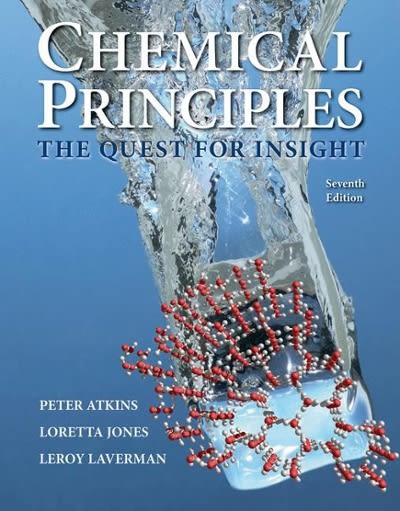A person with pernicious anemia lacks intrinsic factor, a compound required for the absorption of vitamin B
Question:
A person with pernicious anemia lacks “intrinsic factor,” a compound required for the absorption of vitamin B12 and its storage in the liver. The diagnosis is confirmed with the Schilling test.
In this test the patient is given a small dose of vitamin B12 labeled with radioactive 57Co or 58Co, followed by a saturating dose of unlabeled B12, which releases the stored B12. If the patient has intrinsic factor, a 24-hour urine sample will contain 13−15% of the labeled B12. If intrinsic factor is absent, less than 6% will be excreted. The patient is then given intrinsic factor and the test is repeated for comparison. In one administration of the Schilling test, the patient was given a capsule containing 0.5 μCi of 58CoB12, followed by 1.0 mg of unlabeled B12. Then 1200 mL of urine was collected over the next 24 hours. A sample of the urine of volume 3.0 mL gave 83 cpm (counts per minute) and a standard sample of volume 3.0 mL containing 0.4 nCi per mL gave 910 cpm. The test was repeated one week later with the administration of 30. mg of intrinsic factor. The sample of urine from the second test gave 120 cpm. The half-life of 58Co is 72 days.
(a) Calculate the percentage of 58Co excreted with and without the intrinsic factor. Assume that the first test did not contaminate the second test.
(b) What would be the activity of the 58CoB12 in the original capsule if it were stored for 7 days?
(c) If the biological half-life of B12 is 180 days, what is the effective half-life of 58CoB12 in the body? See Exercise 10.20.
(d) Use the effective half-life of 58CoB12 to determine what fraction of the counts in the second test would be due to the dose given in the first test.
(e) The radioisotope 58Co decays to another radioisotope, 59Fe. The total mass of iron in the patient was 2.5 g. If all the 59Fe produced in the first test were incorporated into hemoglobin, what percentage of the total iron would be 59Fe the day after the first test? Ignore the decay of 59Fe.
Exercise 10.20
The biological half-life of a radioisotope is the time required for the body to excrete half of the radioisotope. The effective half-life is the time required for the amount of a radioisotope in the body to be reduced to half its original amount, as a result of both the decay of the radioisotope and its excretion. Sulfur-35 (t1/2 * 87.4 d) is used in cancer research. The biological half-life of sulfur-35 in the human body is 90. d. What is the effective half-life of sulfur-35?
Step by Step Answer:

Chemical Principles The Quest For Insight
ISBN: 9781464183959
7th Edition
Authors: Peter Atkins, Loretta Jones, Leroy Laverman





